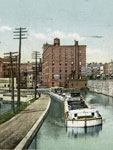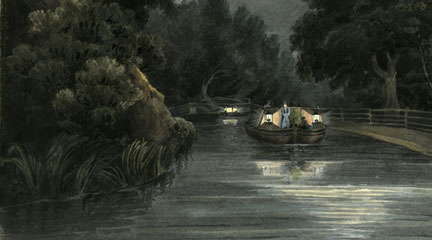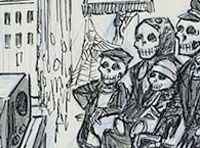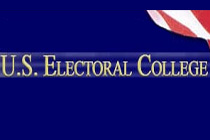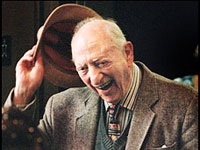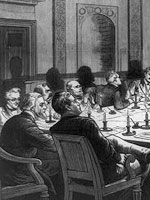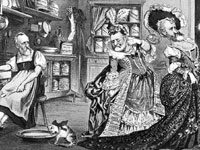Teaser
Cutting through New York from the ocean to the Great Lakes, the Erie Canal changed lives.
Description
How would the Erie Canal have changed your life and the lives of those around you? Politics, trade, and the land itself were all affected.
Article Body
This lesson from Teachers’ Domain examines how the construction of the Erie Canal affected the geographic, economic, and political landscape of the United States. In exploring these issues, students are presented with four computer-based activities.
The first two activities—viewing documentary video clips—are engaging, brief, and informative. These clips could be projected to the whole class if a teacher does not have access to multiple computers.
The third—an interactive graphic organizer—allows students to categorize different consequences of the construction of the Erie Canal in terms of geographic, political, and economic effects. The interactive graphic organizer allows students to draw connections between consequences in different categories and explain how they are interconnected in a pop-up comment box. After they are done, students can print out the graphic organizer.
The final activity in the lesson, which requires students to read and write, can be done either on a computer or not. It asks students to synthesize information from the video clip and a background reading (available in two different reading levels), and students can choose from three different writing assignments.
Rubric_Content_Accurate_Scholarship
Yes
Featured video contains interviews with reputable scholars.
Rubric_Content_Historical_Background
Yes
Historical background provided in videos and handouts.
Rubric_Content_Read_Write
Yes
Students take notes throughout the assignment and write a short essay evaluating the major changes resulting from the construction of the Erie Canal.
Rubric_Analytical_Construct_Interpretations
Yes
Using evidence from the documentary video and a background reading, students assess and examine the economic, political, and geographic effects of the Erie Canal on the nation.
Rubric_Analytical_Close_Reading_Sourcing
Rubric_Scaffolding_Appropriate
Yes
Two versions of background handout are included for different grade levels.
Rubric_Scaffolding_Supports_Historical_Thinking
Yes
A graphic organizer helps students organize their ideas and draw connections between the various effects resulting from the Erie Canal’s construction.
Rubric_Structure_Assessment
Yes
Students can write an essay on the canal’s effects on America or New York State. Students can write a journal from the perspective of someone who experienced the effects of the Erie Canal five years after its construction.
Rubric_Structure_Realistic
Rubric_Structure_Learning_Goals
No
Requires access to multiple computers, but can be adapted for classroom use in which only one computer and a projector are needed to stream the video.
